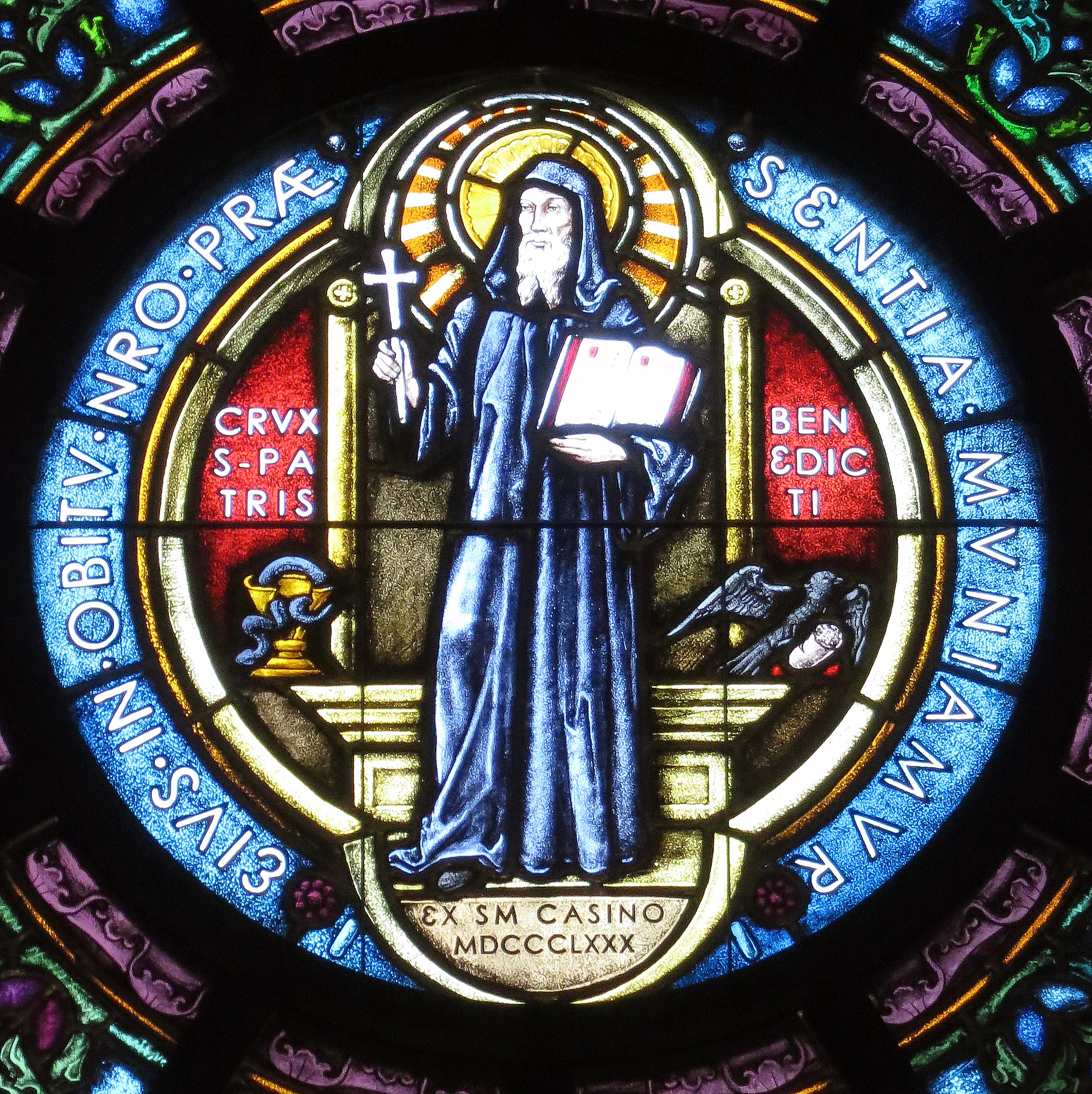By Nheyob – Own work, CC BY-SA 4.0
St. Benedict of Nursia, the father of Western monasticism, is often depicted holding a broken cup, a black raven sitting next to him. These two seemingly odd iconographic elements are the evidence of an attempted murder by poisoning. It is, if you will, a monastic detective story –as in The Name of the Rose.
The story is told by an exceptional chronicler: Pope Gregory the Great, the famous promoter of Gregorian chant. The famous medieval Pope devoted a whole book to the life and miracles of St. Benedict –a saint he deeply admired.
It is thanks to Pope Gregory that we know that Benedict, who had lived as a hermit in the Sacro Speco of Subiaco for three years, was urged by a nearby community of monks to become their abbot after the death of the previous one. Benedict was initially disinclined to accept the request, yet ultimately consented to it. His intuition was soon proven right.
First attempt
Pilgrims visiting the monastery of San Cosimato in Vicovaro get there on the tenth day of walking through the Way of St. Benedict –a pilgrimage route tracing the places of the saint’s life all the way from Nursia, his hometown, to the great abbey of Montecassino. Today, San Cosimato is a Franciscan retreat, with a pleasant guesthouse and a splendid view.
Next to the monastery, in caves dug into the rock, the ancient monastery where the events described by Gregory took place still stands. Visitors can go down a stone staircase on the hillside overlooking the river Aniene, next to the remains of two Roman aqueducts, and visit the place where the small community of monks that Benedict agreed to lead once lived.
But Benedict was a strict, straightforward man who would not tolerate any irregularities in monastic life. Problems soon began, and tragedy unfolded:
Having now taken upon him the charge of the Abbey, he took order that regular life should be observed, so that none of them could, as before they used, through unlawful acts decline from the path of holy conversation, either on the one side or on the other: which the monks perceiving, they fell into a great rage, accusing themselves that ever they desired him to be their Abbot, seeing their crooked conditions could not endure his virtuous kind of government: and therefore when they saw that under him they could not live in unlawful sort, and were loath to leave their former conversation, and found it hard to be enforced with old minds to meditate and think upon new things: and because the life of virtuous men is always grievous to those that be of wicked conditions, some of them began to devise, how they might rid him out of the way (Gregory the Great, Dialogues, Book II)
The monks decided to pour poison into Benedict’s wine and offered him a cup for the customary blessing. But when he made the sign of the cross, the cup miraculously broke into pieces. Benedict immediately understood what had happened. Cool as Columbo, he confronted them, and went back to the solitude of Subiaco.
Second attempt
But Benedict was not destined for a quiet, eremitical life. As his reputation grew and the number of his disciples increased, the priest of a nearby church began to envy Benedict.
We know from Gregory that this priest was named Florentius. We also know that he tried to tempt Benedict with women and slandered him left and right. As his efforts got nowhere, he decided to give him a poisoned loaf of blessed bread. Benedict, realizing what Florentius intended, ordered a crow to take the bread and carry it far away, where no one could find it.
At dinner time, a crow daily used to come unto him from the next wood, which took bread at his hands; coming that day after his manner, the man of God threw him the loaf which the Priest had sent him, giving him this charge: “In the name of Jesus Christ our Lord, take up that loaf, and leave it in some such place where no man may find it.” Then the crow, opening his mouth, and lifting up his wings, began to hop up and down about the loaf, and after his manner to cry out, as though he would have said that he was willing to obey, and yet could not do what he was commanded. The man of God again and again bade him, saying: “Take it up without fear, and throw it where no man may find it.” At length, with much ado, the crow took it up, and flew away, and after three hours, having dispatched the loaf, he returned back again, and received his usual allowance from the man of God. (Gregory the Great, Dialogues, Book II)
Both elements, the broken chalice and the crow, were since then associated with the memory of the saint and his impressive capacity to dodge death. The Dialogues tell of Benedict’s compassionate feelings towards Florentius –and the latter’s tragic death, when the terrace on which he was standing suddenly collapsed.
This second episode took place near Subiaco, where several coenobiums boomed around the Grotto of the Sacro Speco. Today, only two of these remain, transformed into beautiful buildings: the monastery of St. Benedict and that of St. Scholastica –his sister, also a hermit.
All these places are part of the Way of St. Benedict. Find out more here:





